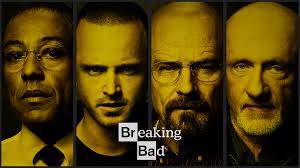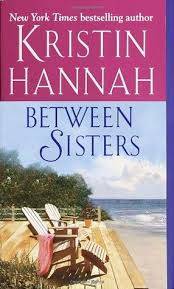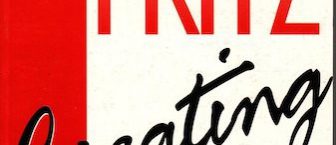At the end of last year, an award-winning Australian film director told me that people often asked him how to best learn to become a filmmaker. His response – study Breaking Bad created by Vince Gilligan.

Like many of the ground-breaking cable television series, Breaking Bad unfolds like a good novel. David Simon, who created The Wire, another great series, pitched the crime writer, George Pelecanos, to join the writing team with the concept that The Wire was like a novel for television.
The actor Anthony Hopkins was so impressed by the show that he felt compelled to write to Bryan Cranston the actor who played Walter White in Breaking Bad. Below is an edited version of what he wrote.
Dear Mister Cranston,
“I’ve just finished a marathon of watching ‘BREAKING BAD’ – from episode one of the First Season – to the last eight episodes of the Sixth Season. A total of two weeks (addictive) viewing. I have never watched anything like it. Brilliant!
“What is extraordinary, is the sheer power of everyone in the entire production. What was it? Five or six years in the making? How the producers (yourself being one of them), the writers, directors, cinematographers… every department – casting etc… managed to keep the discipline and control from beginning to the end is awesome. 
“Thank you. That kind of work/artistry is rare, and when, once in a while, it occurs, as in this epic work, it restores confidence.
Best regards,
Tony Hopkins
This article highlights 4 lessons that fiction writers can learn from Breaking Bad that are integral to our 10-Month Novel & Script First Draft Course.
Please note: The Writers’ Studio runs creative writing courses. Our articles about writing are designed to explore tools and techniques that will help aspiring writers realise their writing goals, as well as showing how these tools and techniques work in our courses.
1. Characters Drive the Story. What does this Mean?
Vince Gilligan’s original pitch to the studios for Breaking Bad was – Walter White goes from Mr Chips to Scarface. That character journey is what drove the story writing process for the entire six seasons. 
Figuring out the character journey is the first step in our Novel & Script First Draft Courses. Writers spend eight weeks finding the character journey and broad outline of the story they are inspired to write. This is so the writer can feel confident to start the actual first draft, knowing that their story has the structural legs to go the distance.
Please note, this is a fluid process and the character journey and story evolve during the writing of the actual first draft. And when writing the first draft, we use story structure to constantly link the action of the story with the characters’ deeper journey.
Linking the story events to the character journey is critical in creating a profound story and is at the heart of all our courses. And is one of the most important elements that many writers fail to address when writing a story on their own without an organic process. 
As Dwight Swain writes in Techniques of the Selling Writer, “Too often, the writer falls into the trap of writing about things – about sex, about violence, about scenery, about historical events, about war, about domestic bliss or discord. Historical fact and clinical detail overwhelm him/her … and the work never quite reaches the reader.
“In brief, although the work may on the face of it be cast rigidly in story form, it isn’t actually fiction. For a story is never really about anything. Always it concerns, instead, someone’s reactions to what happens: their feelings; their emotions, their impulses, their dreams, their ambitions, their clashing drives and inner conflicts. The external serves only to bring them into focus.“
Gilligan said that during the writing of Breaking Bad, the writers were always asking such key questions as:
“Where is Walt’s head at? What does he want right now? What is he afraid of? What is his goal right now? What does Skyler want? What does Jesse want?”
As a result, the characters drive the plot and their motivation always feels believable as they all go on a journey of change.
2. Writing a Story and Developing Characters is a Process
Many aspiring writers who attend our 4-Week Unlocking Creativity courses suffer a common misconception about what is involved when it comes to writing a novel or screenplay.
The majority believe that before they even start writing their story, they need to first come up with a Pulitzer Prize winning character and story line that will drive the whole story writing process. Anything less is labelled a cliché and a good reason to stop pursuing their writing dream.
However, believing you have to come up with fully rounded characters before you begin is a fantasy of the uninitiated. You find your characters in the writing and this takes time. There are no shortcuts in the writing process.
When you start your story, you have only a rough idea who your characters are. As you write your first draft they will constantly surprise you as you dig deeper and flesh them out. 
We often quote the New York Times best selling novelist, Kristin Hannah, in our courses. She said she always started with stick characters (such as the bad cop, the jealous boyfriend or the aggressive worker) and developed them from there. As she worked through the process of writing her novels, they just kept getting richer and more interesting.
Likewise, while Gilligan had a clear idea of his main character’s deeper journey from the start, it was still very much a fluid process of discovery where he remained open to surprises.
He said, “There’s so much about the character that I didn’t know going into it or things that I thought I knew, but better things came along.
“My knowledge of Walter White now is so much richer than it was when I was working on the pilot. I didn’t realize just how prideful and broken he was the way that I do now.”
3. Remain Open to the Process
A trap many writers fall into when starting our First Draft Course is that they feel they have to figure everything out at the start. They are yet to appreciate that writing a novel or a screenplay is a process of discovery and it is only by working through the process that you discover hidden depths to your story. To do that, you need to remain open to what will happen down the track. 
Gilligan and his writers understood the creative power of remaining open and seeing problems as opportunities that could only make the story richer.
In preparing Season Two, actor Raymond Cruz was all set to play the lead villain, a drug kingpin named Tuco Salamanca. But after shooting just one episode, Cruz had to leave the show to film another series.
Undaunted, Gilligan created a new bad guy, Gustavo Fring, a meth distributor who owns a fast food restaurant chain, played by Giancarlo Esposito.
“We had to roll with it,” Gilligan said, “And in my mind Gus is one of the absolute highlights of the entire series. He would very likely have not existed if another actor had been available to us. If you’re too rigid in your thinking you may miss some wonderful opportunities for storytelling.”
In the 10-Month Course we constantly remind writers to remain open and see the writing of a first draft as an act of discovery as we know how good everyone’s stories become as they work through the process. In fact, there is a point about halfway through where all the participants are amazed at how good everyone’s story has become.
We often refer to the principles of this quote by Eric Maisel:
“Refuse to know too soon. All that not knowing, all those doubts, all the sense data flooding from without and within. This is the chaos of working: this is the necessary chaos that must not be avoided by too much knowing. Nothing kills a work more surely than contemplating the entirety of the work when all we need do is engage the work right before our eyes.”
4. The Power of Working with Others
There is a myth that writers should do everything on their own and write in a creative bubble. When writing Breaking Bad, Gilligan said he resisted making creative decisions without input from everyone in the creative team. He wanted everyone in the room.
He said, “If I had the time to write the whole show on my own, it wouldn’t have been as good as what we came up with collectively. It would’ve been poorer relying on my own resources. I’d have been an idiot not to use their input.”
While, you have to take total creative responsibility for your story and the choices you make, you don’t have to write it on your own.

